Theory and practice of escape from the 5 GHz band

The well-known range for fixed radio access — 5 GHz — has long been heavily overloaded, interference is increasing year by year, and customers demand higher speeds. Operators are forced to look for new frequencies. Someone begins to build a core network on the RRL, someone prefers the 70 GHz type millimeter range. But it is expensive and suitable only for the core network. And the last mile must be built on something inexpensive. The nearest allowed range is 5.9-6.4 GHz. And finally, at least some sort of diversity appeared in it.
The study of the distribution of frequencies across Russia showed that there are not so many options for practical broadband access:
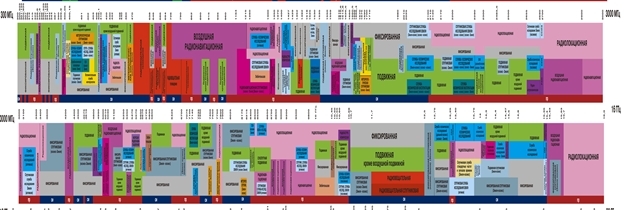
In more detail in a graphic or text form.
2.4 GHz band - fully occupied by short-range networks
The range of 3.5 GHz is practically monopolized, it is unrealistic to receive frequencies, coordination with the primary owner of frequencies is required.
The range of 5 GHz is a classic range, almost exhausted in the most interesting regions, new assignments are practically not issued, many illegal networks.
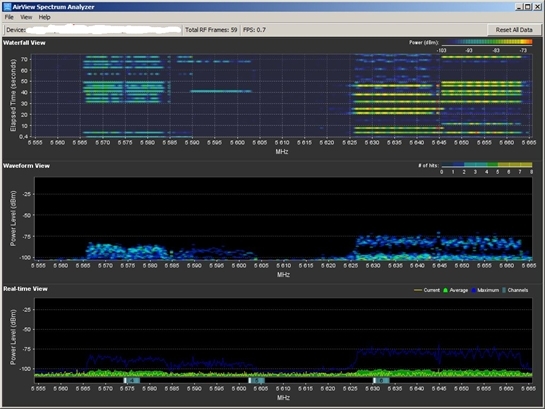
Far from the worst-case interference in the 5 GHz band.
The range is 6-6.4 GHz - the regulation is similar to 5 GHz, there are a lot of free frequencies, there are few illegal networks due to the small distribution of equipment in this range.
So - the conclusion is obvious - you need to develop at 6.4 GHz.
It remains to understand what.
The 6.4 GHz band is not common in the world. In fact, only in several countries besides Russia is it intended for commercial use. The consequence of this is a very poor choice of equipment for this segment of the air: standard Wi-Fi chipsets, popular in low-cost equipment, simply do not work above 5900-6100 MHz. Some craftsmen reflash versions of the equipment on older Wi-Fi chips, getting higher frequencies, but you can simply forget about the power and signal mask according to the standard. Even the old XM airmax, which still had a radio calibration for the upper frequency ranges, are significantly inferior to the M6 line, what can we say about solutions “from enthusiasts” using new Airmax devices that are not calibrated above 5850 MHz

The test point-to-point channel nanostation m5 (old hardware platform with the compliance test) and nanostation m6 in conditions nearLos 4,43 Km
We see that even the most successful nanostation m5 do not work well in the 6 GHz frequency range

Calculation of the radio path
So, about industrial solutions of the range 5.9-6.4 GHz.
')
Let's start with the domestic manufacturer.

Infinet , a domestic manufacturer based in Yekaterinburg, offers point-to-point and multipoint solutions for the current frequency bands in Russia, including 6-6.4 GHz.
In fact, the standard Wi-Fi chipset is supplemented here with a frequency converter, a powerful computing platform, and a new work logic, with two to choose from: TDMA and Polling. As a result, we get a high-performance and very reliable (according to many years of statistics) system for building networks of telecom operators.
TDMA mode allows network latency and frequency reuse. If traditionally it takes 6 frequencies to build a 6 sector base station, using TDMA mode and GPS synchronization you can get by with just three face values, thanks to the synchronization of the opposite sectors.

Using sector synchronization significantly saves on-air resources

This small accessory allows you to build a base station of six sectors in three frequencies, using a common frequency for the opposite sectors.
The second solution from Infineta is Infinet XG, built on completely different hardware principles. In fact, this is an SDR relay, operating in TDD mode. Very productive (> 1M packets per second), up to 480 Mbit / s in the 40 MHz band.
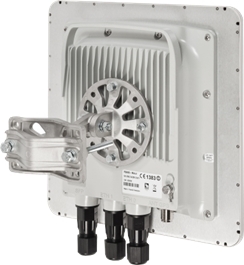
In this decision, you can select only one minus - the cost of equipment.
And what is cheaper?
For the answer to this rhetorical question, operators traditionally look at Ubiquiti. And oddly enough, there is a solution. There are only two models - the DreamStation M6 base with an integrated antenna of 90 degrees and the subscriber unit Nanostation M6 . For most of the needs of the operator is enough.

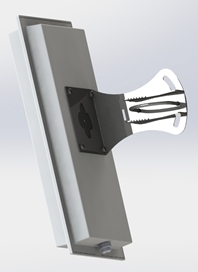
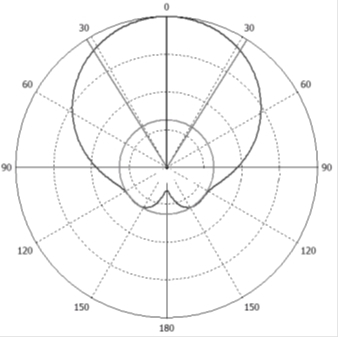
Ubiquiti line 6-6.4 GHz nanostation M6 , Dreamstation M6 and its radiation pattern
As you can see, Infinet and Ubiquiti solutions are antagonists in terms of price and features.
Infinet is the maximum of functionality, regardless of costs, Ubiquiti is a communication channel for minimal money.
And what if you want more traffic controllability than Ubiquiti provides, but not for the Infinet price?
The traditional solution in this situation is the Mikrotik equipment, but it was not made in the 6.4 GHz band ... until recently ...
Meet the first swallow of the range 5.9-6.4 GHz - RBSXTG-6HPnD

As you can see, this is a classic Mikrotik client / point-to-point solution with a built-in antenna, similar to other SXT models, all differences are inside the case, in the filters and calibration tables of the radio module.
It is clear that the changes in the radio chip did not affect the other functionality of the device - both traffic management and the ability to work as an access point in place, however, the 28-degree antenna doesn’t really contribute to this ...
We summarize the key features of the devices in the table
Parameters of radio interfaces.
| Topology | Antennas | Power | Capacity useful at 20 / 40MHz | Frequency reuse | Access method | Temperature | Interfaces | |
| Infinet | Any | External, embedded sector and directional 19,24,27 DB | 200 mW | 120/210 Mbps | optional | CSMA / CA, polling, tdma | From -40 to +65 and from -55 to +65 | 1xGE or 1-2 FE |
| Infinet xg | Point to point | External, built-in directional 24.27 dB | 500 mW | 240/480 Mbps | optional | TDMA | From -55 to +65 | 2xGE, sfp |
| Ubiquiti | Any | Built-in 16 db directed and sector | 125-500 mW in different modulations | 110/200 Mbit / s | Not | CSMA / CA polling | From -40 to +65 | 2xFE |
| Microtik | Any | Built-in directional 16 dB | 250-1000 mW in different modulations | 110/200 Mbit / s | Not | CSMA / CA polling | From -40 to +65 | 1xGE, usb |
Networking opportunities
| Batch performance | Mode | QoS | Traffic limiter | Frequency reuse | Access method | Traffic filtering | |
| Infinet | 100-200 kpps | L2, L3, RIP, OSPF | arbitrary number of queues, any rules | by any criteria | optional | CSMA / CA, polling, TDMA | by any criteria |
| Infinet xg | 1000 kpps | L2 | 4 hardware queues, L2 criteria | Yes | optional | TDMA | Yes, by VLAN |
| Ubiquiti | 30 kpps | L2, L3 | WMM, not configurable | VLAN only | Not | CSMA / CA polling | Yes |
| Microtik | 60-270 kpps depending on settings | L2, L3, RIP, OSPF | arbitrary number of queues, arbitrary modulation rules | by any criteria | Not | CSMA / CA polling | Yes |
General conclusion on equipment options 6-6.4 GHz
| Cost of | The effectiveness of the use of ether | Completeness of a model range | Traffic controllability | Supply Model | Support model | |
| Infinet | High (over $ 350 per terminal) | High | High | Very high | Project | Integrator => distributor => manufacturer |
| Infinet xg | High (more than 4 thousand USD per span) | Very high | High (considering that this is only point-to-point) | High | Project | Integrator => distributor => manufacturer |
| Ubiquiti | Low (just over $ 100) | Average | Medium - only one type of basic and one type of subscriber devices | Low | Free sale | Best Effort, producer forum |
| Microtik | Low (just over $ 100) | Average | Low, only 1 device type | High, but traffic filtering greatly affects the processor | Free sale | Best Effort, producer forum |
findings
For a long time, despite the practical exhaustion of the resources of the 5 GHz band, operators were forced to huddle in it due to the lack of budget equipment in the 6.4 GHz band.
Now the situation has changed, in addition to the productive but expensive Infinet, we now have two budget solutions: Ubiquiti and Mikrotik.
Ubiquiti traditionally wins by its simplicity of setting, and in this range - by the completeness of the model range (both subscriber and base stations).
Mikrotik offers more traffic control than Ubiquiti, but has so far announced only one device. Hopefully, this is just the beginning.
Source: https://habr.com/ru/post/283344/
All Articles